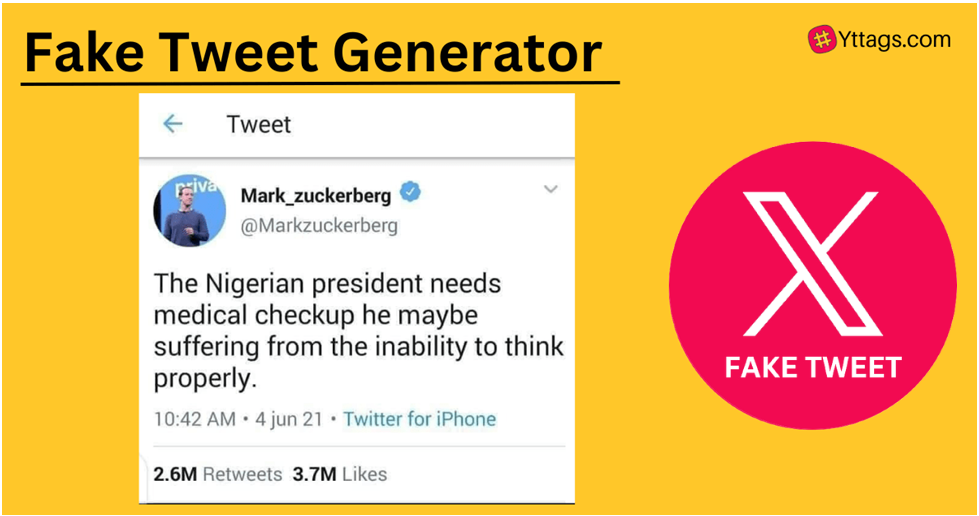Resources to Generate Fake Tweets:
A number of easily navigable online tools are available for the purpose of make a fake tweet. Let’s examine some of the more well-liked choices in more detail:
1. False Twitter Creation Tools:
In a matter of seconds, fake tweets can be easily created with fake Twitter generators. Customize tweet content, timestamps, profiles, and even the quantity of likes and retweets with these generators that imitate the official Twitter interface.
2. Tools for Editing Photos:
Utilizing photo editing software to produce lifelike screenshots will increase the verisimilitude of your fictitious tweets. With the help of programs such as Photoshop by Adobe, Canva, and or even free web photo editors, you can precisely design and alter tweets.
Techniques for Authentic-looking Fake Tweets:
Creating a convincing fake tweet requires attention to detail and an understanding of Twitter’s visual elements. Here are some techniques to make your fake tweets look authentic:
1. Choosing the Right Profile Picture:
To make your fake tweet resemble a genuine one, select appropriate profile pictures for the accounts involved. Use high-resolution images and ensure they match the profile picture dimensions used on Twitter.
2. Crafting Realistic Usernames and Handles:
Create usernames and Twitter handles that align with the personality or context of the account. Think creatively, incorporating details that make sense for the fake account you’re creating. This extra effort adds authenticity to your fake tweet.
3. Mastering Tweet Formatting:
Understanding how tweets are structured on Twitter is essential for creating authentic-looking fake tweets. Pay attention to formatting elements such as line breaks, hashtags, mentions, and retweet notifications.
When crafting your fake tweet, ensure that URLs, hashtags, and mentions are formatted correctly to resemble actual tweets.
Ethical Considerations:
While creating fake tweets can be entertaining, it’s essential to consider the ethical implications of sharing manipulated content.
1. Disclosure:
When sharing or reposting fake tweets, it’s crucial to disclose that they are indeed fabricated. Failure to do so can mislead others and contribute to the spread of misinformation. Be clear about the tweet’s authenticity to maintain honesty and transparency.
2. Respect and Privacy:
Avoid creating fake tweets that could harm or invade someone’s privacy. Respect the boundaries and reputations of individuals by refraining from creating malicious or defamatory content.
3. Satire and Parody:
Creating fake tweets for satirical or parody purposes is common. However, it’s essential to ensure that your intention is clear and that your content is not misleading. Labeling your tweets as satire or parody can help distinguish them from genuine tweets.


